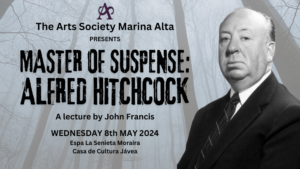Brief analysis of the painting of the Mare de Déu dels Àngels de Xàbia
Local art historian David Gutiérrez takes a look at the iconic painting that was, it is claimed, found in a rabbit warren on La Plana.
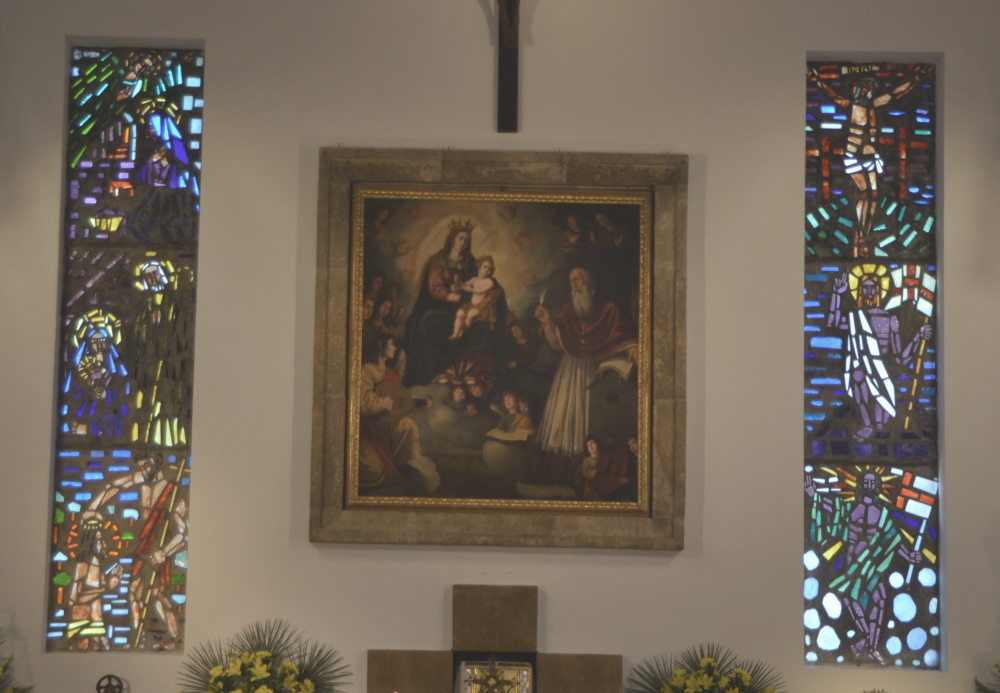
Monday 2nd August 2021 – DAVID GUTIÉRREZ PALIDO with Mike Smith
On the big day of the festivities of Nuestra Señora de los Ángeles, an image of devotion that is preserved in the sanctuary of Nuestra Señora de los Ángeles on La Plana de Xàbia, we should take a look at the beautiful painting above its altar and make a small iconographic study of what is represented.
Tradition says that the painting of Nuestra Señora de los Ángeles was found by a hunter who, chasing rabbits, found the canvas in a burrow or next to a tree, a find which led to a chapel being built there in 1760 over the remains of the old convent of San Jerónimo, which was founded in the 14th century.
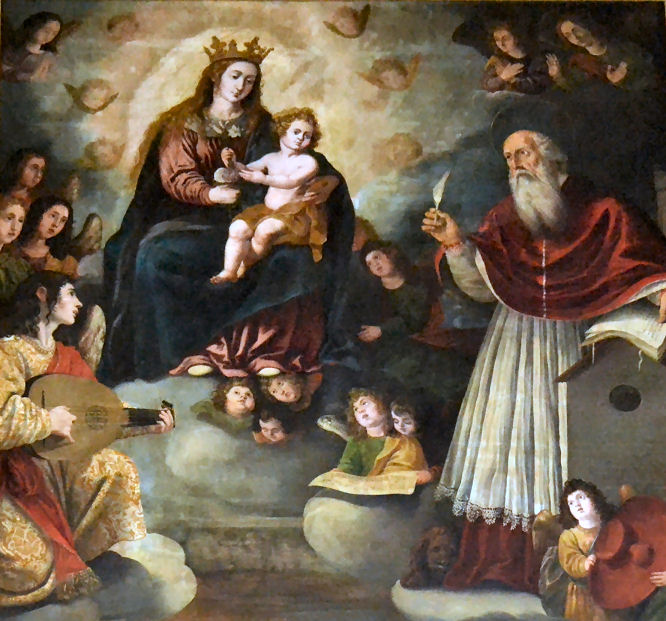
The oil painting on canvas is anonymous but, by style, colours and composition, it is thought to be a baroque painting from the late 17th century. The iconography it represents is the apparition of the Virgin Mary with the Child to San Jerónimo just as the visions of the saint were said to be. Investigating a little more in the iconography and in the various elements that are represented, other elements can be highlighted.
To the right is the figure of San Jerónimo, who is dressed in cardinal robes while an angel in the lower corner holds the cardinal’s hat. It is common in the representations of San Jerónimo that, at times, he appears in this clothing and although he is considered one of the Fathers of the Church, he was never ordained a cardinal, only that the fact of having been secretary of Pope Saint Damaso is why these clothes are attributed to him.
San Jerónimo stands with a book and a pen in his hand. This is reminiscent of a remarkable aspect of his person, which was the writing of the Vulgate, that is, the translation of the Bible from Greek and Hebrew into Latin. Another iconographic element that appears at the feet of the saint is a lion, which is the speaking symbol of the saint. The appearance of the animal alludes to a passage in which it is said that, while the saint was next to the River Jordan, a limping lion appeared to him and San Jerónimo took out a nailed thorn, thus becoming a companion animal until his death.
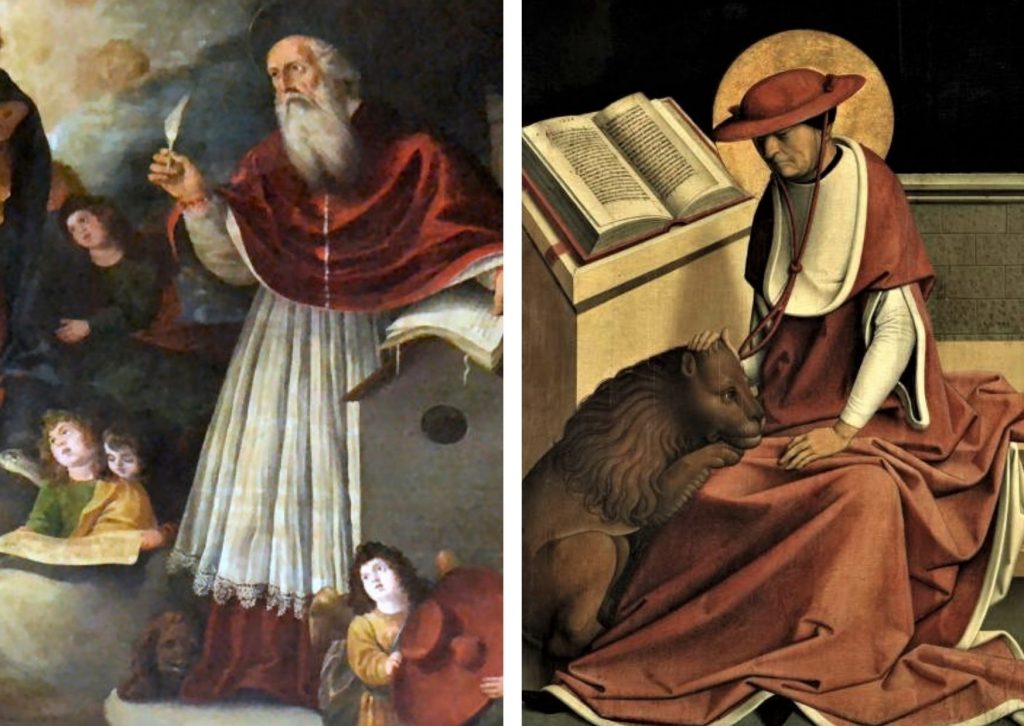
With regards to the other hand, next to the saint there is a building or church with a gabled roof and an oculus, a simple and austere architecture that represents his founding work as monasteries. It should be remembered that the Order of San Jerónimo was founded in 1373 and the first monastery founded in Spain was the one located at the top of Cap de Sant Antoni in Xàbia, moving later, in 1392, to Gandía after the incursion of pirates that devastated the first monastery complex. Therefore, although the painting may be interpreted in a general way to the fact of its founding work, it may in this case have a more particular symbolism recalling the founding of the first monastery of the order of San Jerónimo in Spain.
In front of San Jerónimo appears the representation of the Virgin Mary seated with the infant Jesus on her lap. This appearance of the Virgin has to do with the passages in which the visions that the saint had in his hermit’s life in the desert are told, including the appearance of the Virgin. Furthermore, San Jerónimo was a faithful defender of the Virgin’s immaculate condition. This condition of purity appears symbolized in the painting through the lily flower that the infant Jesus carries in his hands.
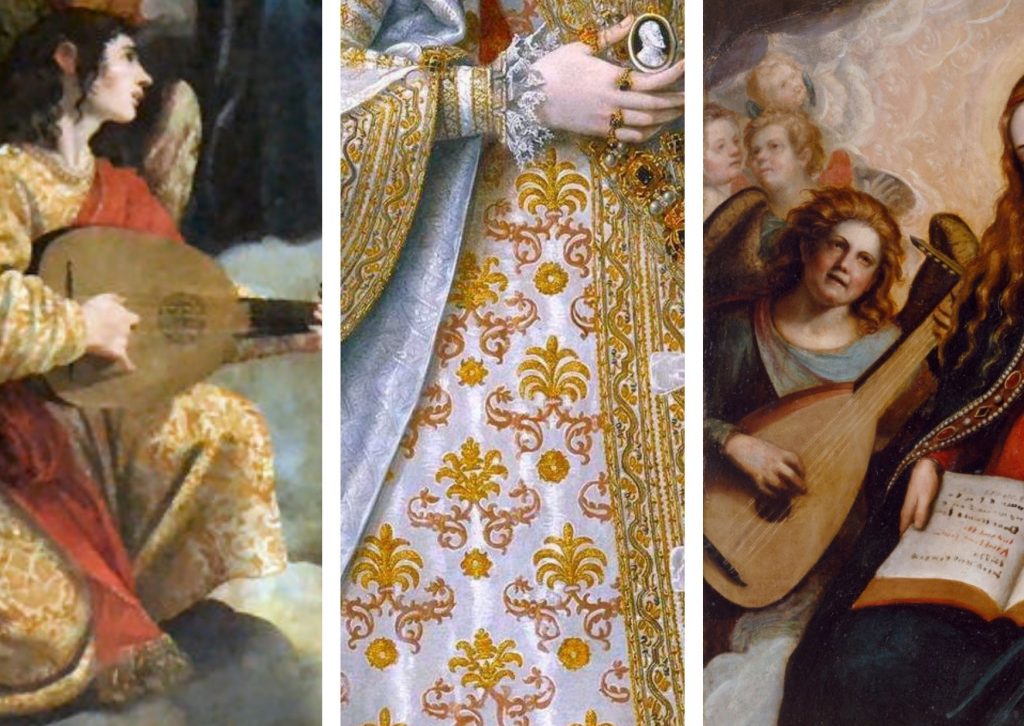
Finally, the Virgin and Child are surrounded by numerous angels, which is why this canvas has been given the name of Nuestra Señora de los Ángeles – Our Lady of the Angels. These heavenly youths are depicted either with small winged heads at the sides among the clouds or as adolescent youths. The angel that attracts the most attention is the one located in the lower left corner who appears dressed in a white tunic with ornaments of golden vegetable brocades, a type of clothing that is copying a fabric of the time that has been common in women’s or ecclesiastical fashion since the 16th century. That same angel is playing a lute, an instrument that has its origin in medieval times introduced by the Muslims and that continued to be used throughout the Golden Age, frequently appearing in heavenly representations in the hands of angels.
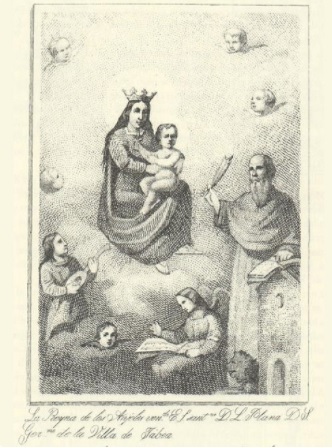
Finally, there is an old print of the painting made in a much simpler way in which, although it maintains some features of the composition of the painting, many aspects of the work have been eliminated. This image is accompanied by a note at the bottom that says: “The Queen of the Angels come [was] da e S [an] Ant [oni] or D [e] L [a] Plana D [e] S [an ] Ger [onim] or of the Villa de Jábea“. This engraving would indicate that the saint represented would be San Antonio and not San Jerónimo, but obviously it is a mistake since the elements that accompany the saint leave no room for doubt.
Perhaps this would lead us to think that the painting could be, in its origin, located in the old chapel of San Antonio founded in the 14th century and whose ruins remained until the early 20th century. Counting the periods of confiscations or other incursions, the legend of its appearance in a burrow could be explained, but this is only a baseless interpretation.
Be that as it may, the point is that the painting is preserved and that due to the characteristics offered by the painting and some elements represented, it may be dated to the second half of the seventeenth century, a time that coincides with the reign of Charles II (1665-1700).



